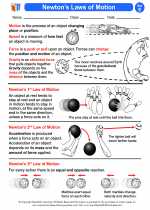Planetary Nebulae
A planetary nebula is a type of emission nebula consisting of an expanding, glowing shell of ionized gas ejected from red giant stars in the last stages of their evolution. Despite the name, planetary nebulae have nothing to do with planets. The name originated in the 18th century when astronomers, using small telescopes, observed these objects and mistook them for planets due to their round, planet-like appearance.
Formation of Planetary Nebulae
Planetary nebulae are formed when a star, similar in size to our Sun, reaches the end of its life. As the star runs out of hydrogen fuel in its core, it expands into a red giant. During this phase, the outer layers of the star are expelled into space, forming a shell of ionized gas and dust. The remaining hot core of the star, known as a white dwarf, ionizes the gas in the shell, causing it to emit radiation and create the visible nebula.
Characteristics of Planetary Nebulae
Planetary nebulae are often characterized by their colorful and intricate shapes, which are the result of complex interactions between the ejected gas and the radiation from the central white dwarf. These nebulae can vary in size, shape, and brightness, and some may exhibit symmetrical patterns while others appear more chaotic in structure.
Study Guide
- What is a planetary nebula?
- How are planetary nebulae formed?
- What is the role of a white dwarf in a planetary nebula?
- Describe the characteristics of planetary nebulae.
- What are the misconceptions about the name "planetary nebulae"?
For further understanding, you can also explore the different types of planetary nebulae, their role in the lifecycle of stars, and their significance in the study of stellar evolution and the chemical enrichment of the universe.
.◂Science Worksheets and Study Guides Fifth Grade. Newton's Laws of motion

 Activity Lesson
Activity Lesson
 Worksheet/Answer key
Worksheet/Answer key
 Worksheet/Answer key
Worksheet/Answer key
 Worksheet/Answer key
Worksheet/Answer key
 Worksheet/Answer key
Worksheet/Answer key
 Vocabulary/Answer key
Vocabulary/Answer key
 Vocabulary/Answer key
Vocabulary/Answer key
